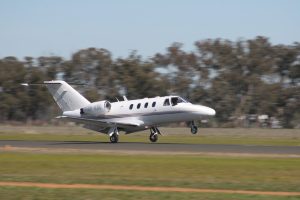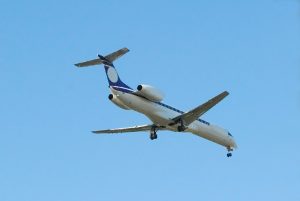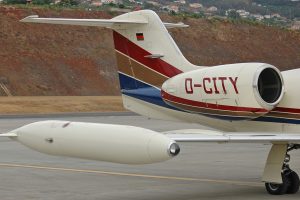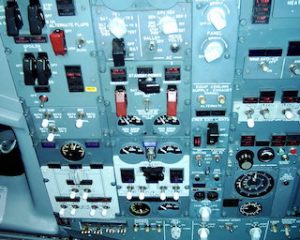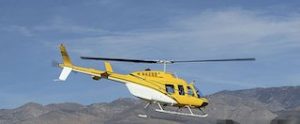A Comprehensive Guide Of GEO FS COM
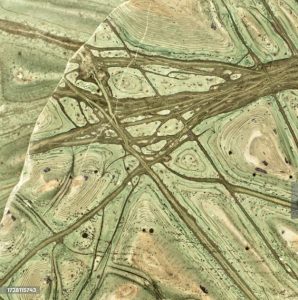 In the evolving landscape of aviation technology, effective data management and access to real-time geospatial information are paramount for pilots. One platform that is making significant strides in this arena is GEO FS COM. This article delves into what GEO FS COM is, its features, benefits for pilots, and its applications within the aviation industry. By the end, you will have a comprehensive understanding of how GEO FS COM can transform your flight planning and operational efficiency.
In the evolving landscape of aviation technology, effective data management and access to real-time geospatial information are paramount for pilots. One platform that is making significant strides in this arena is GEO FS COM. This article delves into what GEO FS COM is, its features, benefits for pilots, and its applications within the aviation industry. By the end, you will have a comprehensive understanding of how GEO FS COM can transform your flight planning and operational efficiency.
What is GEO FS COM?
GEO FS COM is a specialized online platform designed for the management and dissemination of geospatial data in aviation. It integrates various datasets, including maps, weather information, air traffic updates, and terrain data, into a single accessible framework. This system aims to improve situational awareness, enhance flight safety, and streamline the decision-making process for pilots and aviation professionals.
The platform is particularly beneficial in a sector where timely and accurate information can significantly impact the success and safety of flights. By utilizing GEO FS COM, pilots can access real-time data that aids in efficient flight planning and operational management.
Features of GEO FS COM
- Real-time data integration: The standout feature of GEO FS COM is its ability to integrate real-time data from multiple sources. This includes weather updates, air traffic control communications, and flight path information. By having access to this real-time data, pilots can make informed decisions that enhance their situational awareness, which is crucial for flight safety.
- User-friendly interface: GEO FS COM boasts an intuitive interface that simplifies the process of navigating through complex datasets. Pilots can quickly find the information they need without having to sift through layers of data, thereby saving valuable time during flight planning. The ease of use encourages more pilots to adopt the system, increasing its utility across the aviation community.
- Multi-format support: GEO FS COM supports a variety of data formats, including aeronautical charts, satellite imagery, and GIS data. This compatibility allows pilots to work with different types of geospatial data seamlessly. For instance, a pilot can easily overlay weather data on a topographical map to analyse potential flight hazards, leading to more informed decision-making.
- Collaboration features: The platform offers collaborative features that enable multiple users to share information in real-time. This is especially useful for flight crews and ground support teams, who need to stay updated on flight conditions and any changes in plans. The ability to communicate effectively contributes to a more coordinated and safe flight operation.
- Scalability: GEO FS COM is designed to accommodate various users, from private pilots to commercial airlines. This scalability ensures that the platform can handle increased data loads as more users access the system, without sacrificing performance. This flexibility makes it a valuable tool for organisations of all sizes.
Benefits of GEO FS COM for pilots
- Enhanced situational awareness: Situational awareness is crucial for pilots, especially during critical phases of flight. GEO FS COM enhances this awareness by providing real-time access to essential data. Whether it’s weather conditions, airspace restrictions, or traffic alerts, pilots can stay informed and make timely decisions that improve flight safety.
- Improved flight planning: Effective flight planning is vital for operational efficiency. GEO FS COM simplifies this process by offering comprehensive data that pilots can use to analyze their routes. By considering factors such as weather, terrain, and air traffic, pilots can optimise their flight plans, resulting in time and fuel savings.
- Proactive hazard management: GEO FS COM allows pilots to identify potential hazards before they become critical issues. With real-time updates, pilots can assess changing weather patterns or airspace restrictions, enabling them to adjust their flight paths accordingly. This proactive approach contributes significantly to overall flight safety.
- Streamlined communication: The collaborative features of GEO FS COM facilitate better communication among pilots, ground support, and air traffic control. By sharing real-time data, all parties involved in a flight can coordinate their actions effectively. This streamlined communication reduces the chances of misunderstandings and enhances operational safety.
- Regulatory compliance: Maintaining compliance with aviation regulations is essential for all pilots and operators. GEO FS COM helps by providing the necessary data to ensure that flight plans adhere to regulations. This capability simplifies the compliance process and helps avoid potential penalties.
Applications of GEO FS COM in aviation
- Flight route optimisation: GEO FS COM is invaluable for route optimisation. Pilots can access detailed geospatial data to analyze various flight paths. This capability allows them to select routes that minimise fuel consumption and time while avoiding restricted airspace or hazardous weather conditions.
- Weather monitoring: Real-time weather updates are crucial for safe flight operations. GEO FS COM integrates meteorological data that informs pilots about changing conditions. By monitoring this information, pilots can make informed decisions about when to divert or adjust their flight plans.
- Terrain analysis: Understanding the terrain is vital for flight safety, especially when flying at low altitudes. GEO FS COM provides detailed terrain data that pilots can use to assess potential hazards. This analysis is particularly useful for flight operations in mountainous or challenging environments.
- Airspace management: GEO FS COM helps pilots navigate complex airspace by providing up-to-date information on air traffic and restrictions. By being aware of other flights and any changes to airspace regulations, pilots can make better decisions, reducing the risk of air traffic conflicts.
- Emergency response planning: In case of emergencies, having access to accurate geospatial data can be lifesaving. GEO FS COM allows pilots to evaluate potential landing sites and emergency routes quickly. This capability enables them to respond more effectively to unforeseen circumstances.
Future of GEO FS COM in aviation
As technology continues to evolve, the future of GEO FS COM looks promising. The integration of advanced technologies such as artificial intelligence (AI) and machine learning (ML) can further enhance its capabilities. By analyzing historical data and identifying patterns, these technologies could offer predictive insights that aid pilots in making informed decisions.
- Integration with emerging technologies: The future may see GEO FS COM integrating with various emerging technologies, such as drone operations and smart aviation systems. This integration would provide a comprehensive data ecosystem that could revolutionise how pilots manage their flights.
- Enhanced user experience: As the platform continues to evolve, user experience will remain a top priority. Continuous updates and improvements to the interface will ensure that pilots can easily access the information they need. User feedback will play a crucial role in shaping the future of GEO FS COM.
- Global data sharing: The potential for global data sharing among pilots, airlines, and regulatory bodies could greatly enhance aviation safety. GEO FS COM could serve as a central hub for this data, facilitating improved communication and coordination across the industry.
- Increased focus on safety and compliance: As aviation regulations become more stringent, platforms like GEO FS COM will be essential for ensuring compliance. The system will continue to evolve to meet regulatory requirements, making it easier for pilots to adhere to safety protocols.
In summary
GEO FS COM is a groundbreaking platform that enhances flight planning and operational efficiency for pilots. Its key features—such as real-time data integration, multi-format support, and a user-friendly interface—make it an invaluable tool in the aviation industry. By leveraging GEO FS COM, pilots can improve situational awareness, streamline communication, and enhance safety.
As aviation technology continues to advance, the importance of effective data management systems like GEO FS COM cannot be overstated. The future looks bright for this platform, as it evolves to meet the changing needs of pilots and the aviation industry at large. By embracing GEO FS COM, pilots can take their operational capabilities to new heights, ensuring safer and more efficient flights for everyone involved.


